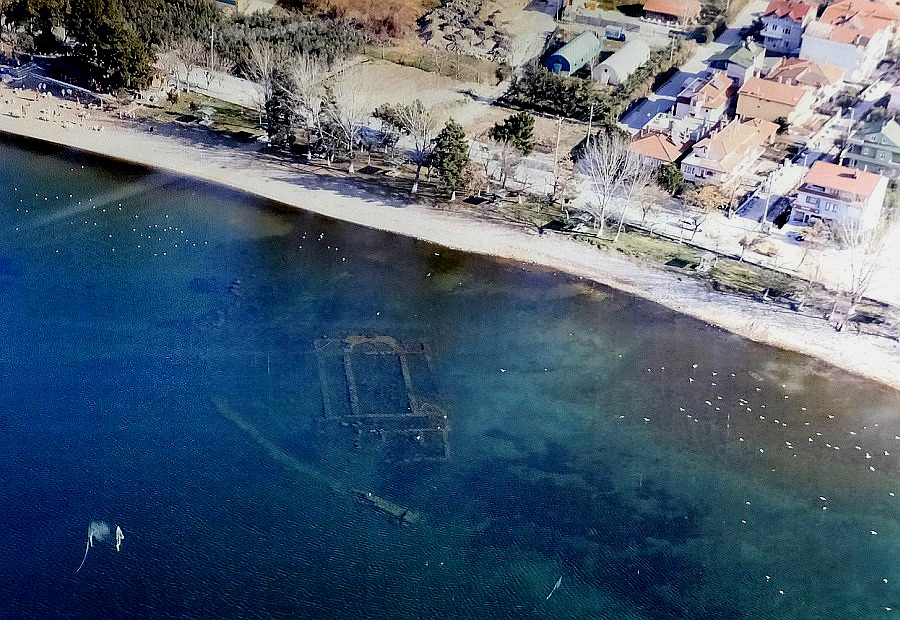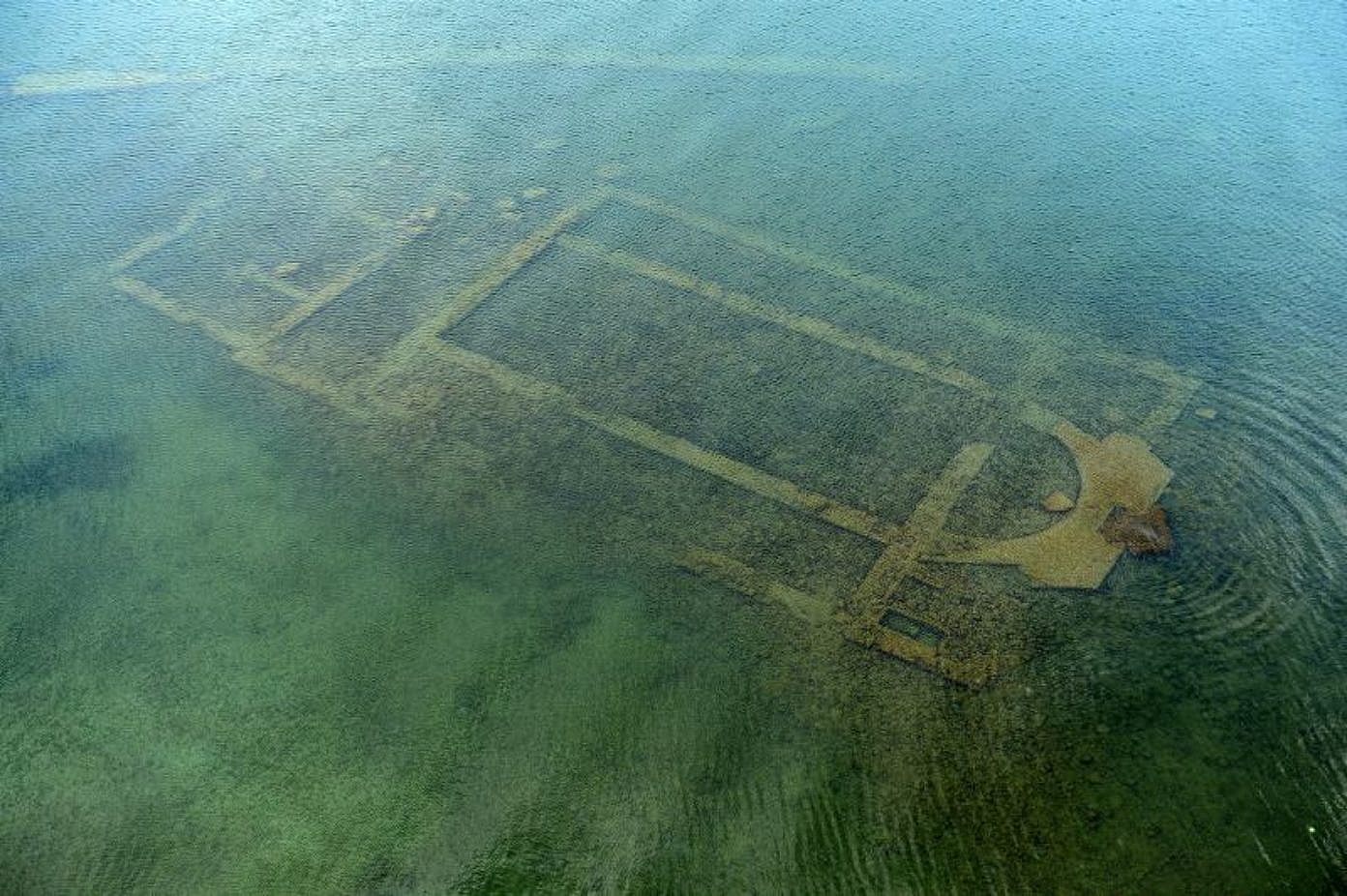In the Iznik district of northwestern Turkey’s Bursa province, the effects of a drought have caused the underwater remains of a 1,500-year-old basilica honoring St. Neophytos to resurface from a lake.

Utilizing aerial photographs, the excavation team led by Professor Mustafa Sahin from Uludağ University in Bursa was able to discover the basilica, which is thought to have originated in the fifth century. The historical remains of the basilica are located 20 meters from the shoreline and two meters below the usual level of the Lake Iznik.
Experts think that the basilica was submerged during an earthquake in 740 AD. Iznik was a significant spiritual center in both the Roman and Byzantine eras. Some archeologists deem the basilica to be an illustration of early Christian architecture, according to sources.
A Byzantine church submerged in Lake İznik was first reported in January 2014. Later, in 2015, Dr. Mustafa Sahin undertook the underwater excavations to conduct the further research on the sunken church. Since then, efforts have been in progress to showcase the ruins as an underwater museum, with excavations still ongoing.
As part of an inventory of historical and cultural artifacts of the region (conducted from the air) now the structure’s secrets have started to come to light.
At first, people thought the church had been consecrated to St. Peter. But, more recently, it has been proven that the edifice was constructed to commemorate St. Neophytos who was only 16 when he was slain by Roman soldiers in 304 AD at Lake İznik’s shore.
During the excavation, archaeologists were able to unearth a plethora of artifacts, one of which being the seal of some Scottish knights who are assumed to have been the initial foreign visitors to the basilica prior to its disappearance beneath Lake Iznik.
In addition, Dr. Mustafa Sahin and his archeological team found that the basilica was actually built on top of an existing structure, which was usual at the time. Furthermore, no evidence of mosaic or stone flooring was discovered, leading scholars to believe that the previous structure had an earthen or wooden floor. Several burials were discovered on the site, some of which contained the skeletons of several young children and a middle-aged adult.

The church, which was dedicated to the martyred St. Neophytos, was built on the location of St. Neophytos’ burial since it was traditional to build churches over martyrs’ graves and worshipers wanted their own graves to one day be near a saint’s.
On the other side, Dr. Sahin believes the basilica’s foundation may have been a pagan temple dedicated to the ancient Greek god Apollo.



